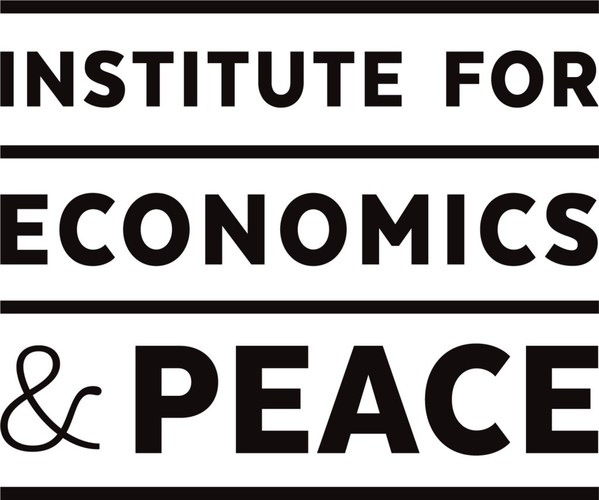 |
LONDON, June 11, 2024 /PRNewswire/ -- Today marks the launch of the 18th edition of the Global Peace Index (GPI) from international think-tank, the Institute for Economics & Peace (IEP), revealing that the world is at a crossroads. Without concerted effort, there is a risk of a surge in major conflicts.
Key results
- 97 countries deteriorated in peacefulness, more than any year since the inception of the Global Peace Index in 2008.
- Conflicts in Gaza and Ukraine were the primary drivers of the global fall in peacefulness, as battle deaths reached 162,000 in 2023.
- 92 countries are currently involved in conflicts beyond their borders, more than at any time since the inception of the GPI.
- First of its kind military scoring system suggests that US military capabilities are up to three times higher than China.
- The global economic impact of violence increased to $19.1 trillion in 2023, representing 13.5% of global GDP. Exposure to conflict poses a significant supply chain risk for governments and businesses.
- Militarisation recorded its largest yearly deterioration since the inception of the GPI, with 108 countries becoming more militarised.
- 110 million people are either refugees or internally displaced due to violent conflict, with 16 countries now hosting more than half a million refugees.
- North America saw the largest regional deterioration, driven by increases in violent crime and fear of violence.
There are currently 56 conflicts, the most since World War II. They have become more international with 92 countries involved in conflicts outside their borders, the most since the GPI's inception. The rising number of minor conflicts increases the likelihood of more major conflicts in the future. For example, in 2019, Ethiopia, Ukraine, and Gaza were all identified as minor conflicts.
Last year recorded 162,000 conflict related deaths. This was the second highest toll in the past 30 years, with the conflicts in Ukraine and Gaza accounting for nearly three-quarters of deaths. Ukraine represented more than half, recording 83,000 conflict deaths, with estimates of at least 33,000 for Palestine up to April 2024. In the first four months of 2024, conflict related deaths globally amounted to 47,000. If the same rate continues for the rest of this year, it would be the highest number of conflict deaths since the Rwandan genocide in 1994.
The global economic impact of violence in 2023 was $19.1 trillion or $2,380 per person. This is an increase of $158 billion, driven largely by a 20% increase in GDP losses from conflict. Expenditure on peacebuilding and peacekeeping totalled $49.6 billion, representing less than 0.6% of total military spending.
Iceland remains the most peaceful country, a position it has held since 2008, followed by Ireland, Austria, New Zealand, and Singapore – a new entrant in the top five. Yemen has replaced Afghanistan as the least peaceful country in the world. It is followed by Sudan, South Sudan, Afghanistan, and Ukraine.
The Middle East and North Africa (MENA) remains the least peaceful region. It is home to four of the ten least peaceful countries in the world and the two least peaceful, Sudan and Yemen. Despite this, the UAE recorded the largest improvement in peacefulness in the region – rising 31 places to 53rd in 2024.
Although most indicators of peacefulness deteriorated over the past 18 years, there was an improvement in the homicide rate which fell in 112 countries, while perceptions of criminality improved in 96 countries.
Steve Killelea, Founder & Executive Chairman of IEP, said: "Over the past decade, peacefulness has declined in nine out of the ten years. We are witnessing a record number of conflicts, a rise in militarisation, and heightened international strategic competition. Conflict negatively affects the global economy, and business risk from conflict has never been higher, compounding the current global economic vulnerabilities.
"It is imperative for governments and businesses worldwide to intensify their efforts to resolve the many minor conflicts before they escalate into larger crises. It's been 80 years since the end of WWII, and the current crises underscore the urgency for world leaders to commit to investing in resolving these conflicts."
Changing nature of conflicts
As conflicts become more widespread and more internationalised, increasing complexity reduces the likelihood of achieving lasting solutions. Ukraine and Gaza are examples of ongoing historical grievances or 'forever wars' without clear resolutions. The number of conflicts resulting in a decisive victory for either side has fallen from 49% in the 1970s, to less than 9% in the 2010s. Over the same period, the number of conflicts that ended through peace agreements fell from 23% to just over 4%.
Another key factor reshaping conflict is the impact of asymmetric warfare technology, making it much easier for non-state groups, as well as smaller or less powerful states, to compete in conflicts with larger states or governments. The number of states using drones rose from 16 to 40, a 150% increase between 2018 and 2023. Over the same period, the number of non-state groups which committed at least one drone attack rose from 6 to 91, an increase of over 1,400%.
Middle East tensions
Due to the Gaza war, Israel's ranking fell to an all-time low of 155th, the largest deterioration in peacefulness in the 2024 GPI. However, over the past decade Palestine has witnessed the largest deterioration, slipping to 145th. Highlighting the growing tensions, Israeli media stories with a negative sentiment towards Palestinians increased from just over 30% in 1999 to 92% in early 2023, while stories with negative sentiment by Palestinian media towards Israelis increased from just under 30% in 1999 to 85% in early 2023.
The conflict has also thrown the entire Middle East region into crisis, involving Syria, Iran, Lebanon and Yemen, with the economic consequences mounting and a high risk of open warfare. A further broadening of the conflict would severely impact the global economy, potentially triggering a worldwide recession. Highlighting the point, Syria's economy shrunk by more than 85% after the start of the civil war in 2011, and the Ukrainian economy shrunk by 29% in the year after the onset of the conflict in 2022.
Global military capability
Since the start of the Ukraine war, militarisation has increased in 91 countries, reversing the trend of the prior 15 years. Given the forward commitments of many countries to military spending, it is unlikely to improve in the coming years.
Changes in the dynamics of warfare have seen troop numbers decrease while technological sophistication has increased. Over the last decade, 100 countries reduced their armed forces personnel, while global military capability increased by over 10%.
First of its kind research by IEP calculates the military capability of countries by combining military sophistication, technology, and combat readiness. It reveals that the US has substantially higher military capability than China, which is closely followed by Russia. Traditional approaches to measuring military capability generally count the number of military assets only.
Regional highlights
- Europe remains the most peaceful region, however, it recorded its largest year on year increase in military expenditure since the GPI's inception.
- North America recorded the largest regional deterioration in peacefulness with a drop of just under 5%. Both the US and Canada saw significant falls, primarily driven by increases in violent crime and fear of violence.
- Sub-Saharan Africa is now the second least peaceful region behind MENA as it faces several security crises – most notably increasing political unrest and terrorism in the Central Sahel.
- Asia-Pacific remains the second most peaceful region with a slight decline in peacefulness. Papua New Guinea recorded the worst deterioration in the region, caused by intensified tribal violence from disputes over territory and land ownership.
- Central America and the Caribbean experienced a minor decline in peacefulness, as countries like Haiti battled high levels of organised crime and civil unrest. Despite this, El Salvador recorded the world's most significant peace improvement.
- South America experienced the second largest fall in peacefulness with a deterioration of 3.6%. The largest changes occurred for the Homicide Rate, Political Terror Scale, and Intensity of Internal Conflict indicators.
NOTES TO EDITORS
For more information and to download the Global Peace Index 2024, visit visionofhumanity.org and economicsandpeace.org. The full GPI report, articles and interactive maps are available at: visionofhumanity.org
X: @globpeaceindex
Facebook: facebook.com/globalpeaceindex
Instagram: instagram.com/globalpeaceindex
About the Global Peace Index (GPI)
Produced by the international think-tank the Institute for Economics & Peace (IEP), the GPI report presents the most comprehensive data-driven analysis to date on peace, its economic value, trends, and how to develop peaceful societies. The report covers 99.7% of the world's population and uses 23 qualitative and quantitative indicators from highly respected sources to compile the Index. These indicators are grouped into three key domains: Ongoing Conflict, Safety and Security, and Militarisation.
About the Institute for Economics & Peace (IEP)
IEP is an international and independent think tank dedicated to shifting the world's focus to peace as a positive, achievable and tangible measure of human well-being and progress. It has offices in Sydney, Brussels, New York, The Hague, Mexico City and Nairobi.
source: Institute for Economics & Peace
想要獨家投資理財Tips?即Like etnet 全新Facebook專頁► 立即讚好































